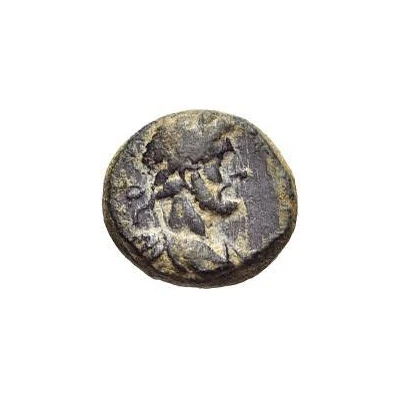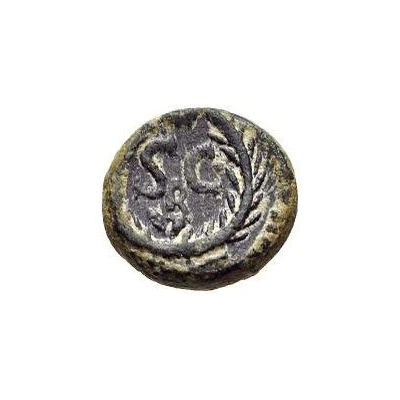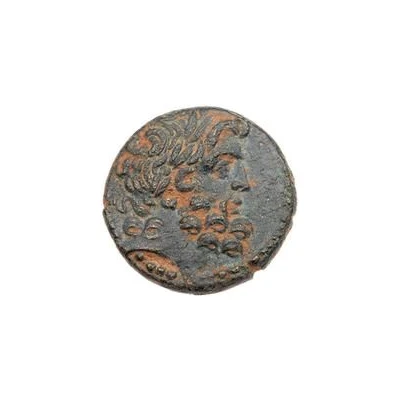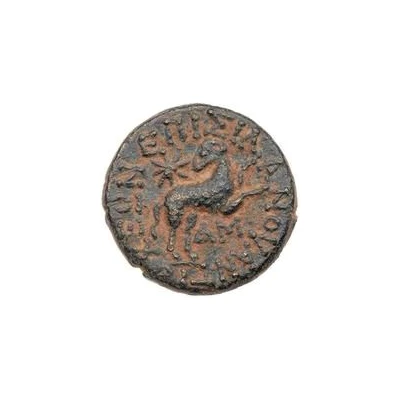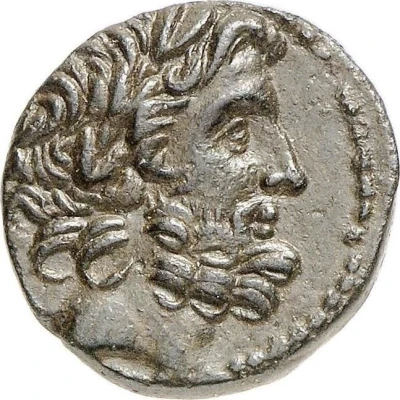
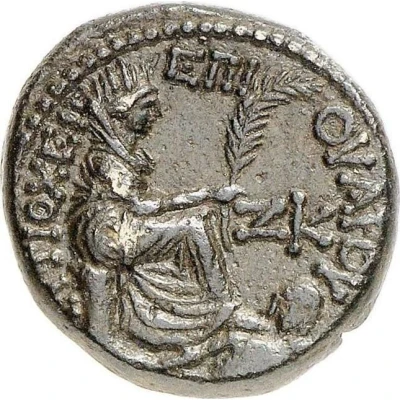

© Fritz Rudolf Künker GmbH & Co. KG, Osnabrück and Lübke & Wiedemann KG, Leonberg
Tetrachalkon - Publius Quinctilius Varus ΑΝΤΙΟΧΕΩΝ ΕΠΙ ΟΥΑΡΟΥ 5 BC - 4 BC
| Bronze | 6.88 g | 18 mm |
| Issuer | Antioch on the Orontes (Syria) |
|---|---|
| Emperor | Augustus (Caius Octavius) (27 BC - 14 AD) |
| Type | Standard circulation coin |
| Years | 5 BC - 4 BC |
| Value | Trichalkon (1⁄16) |
| Currency | Drachm |
| Composition | Bronze |
| Weight | 6.88 g |
| Diameter | 18 mm |
| Shape | Round (irregular) |
| Technique | Hammered |
| Orientation | Medal alignment ↑↑ |
| Demonetized | Yes |
| Updated | 2024-10-06 |
| Numista | N#121493 |
|---|---|
| Rarity index | 92% |
Reverse
Tyche, seated right on rock, wearing chiton, peplos and turreted crown, holding palm brach in right hand; at feet, the river god Orontes swimming right; dotted border.
Year mark in right field.
Script: Greek
Lettering:
ΑΝΤΙΟΧΕΩΝ ΕΠΙ ΟΥΑΡΟΥ
ZK
Translation:
"of the Antiochians under [Publius Quinctilius] Varus".
[Actian year] 27
Comment
Antioch is also known as Antioch on the Orontes.Provincial coin issued under Augustus reign by general Publius Quinctilius Varus, governor of Syria between 7 and 4 BC. Varus was particularly known during this era for its high tax rates.
He will then occupy Jerusalem to stop Judean revolts following Herod's death, leading to the crucifixion of 2,000 rebels.
Varus is best remembered for his defeat in Teutoburg against an alliance of Germanic tribes under the command of Arminius, leading to the loss of three Roman legions.
Interesting fact
The Tetrachalkon coin featuring Publius Quinctilius Varus (ΑΝΤΙΟΧΕΩΝ ΕΠΙ ΟΥΑΡΟΥ) was part of a series of coins issued during the Roman Empire's period of Roman Syria, specifically in Antioch on the Orontes (present-day Antakya, Turkey). These coins were used as a means of payment and circulated widely throughout the region. The coin's design features the image of Publius Quinctilius Varus, a Roman general and politician, on one side, and the emperor Augustus on the other. The inscription ΑΝΤΙΟΧΕΩΝ ΕΠΙ ΟΥΑΡΟΥ (Antioch on the Orontes) is also featured on the coin, indicating its place of origin. It's interesting to note that the coin was made of bronze, a common material used for coins during that time period, and weighed 6.88 grams. The coin's size and weight were standardized to make it easily recognizable and convenient to use in everyday transactions. Overall, this coin is a fascinating piece of history that provides insight into the economic and political systems of the Roman Empire during that time period.
